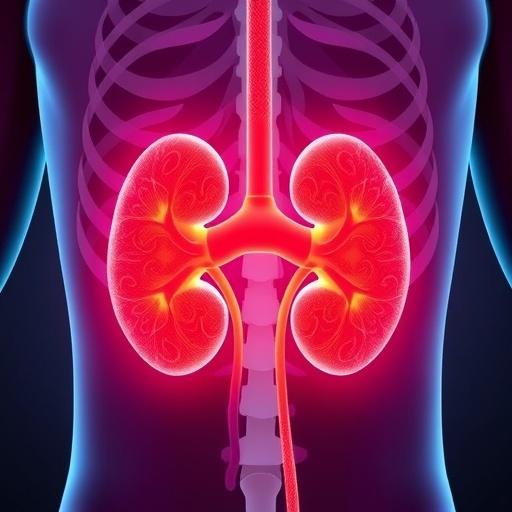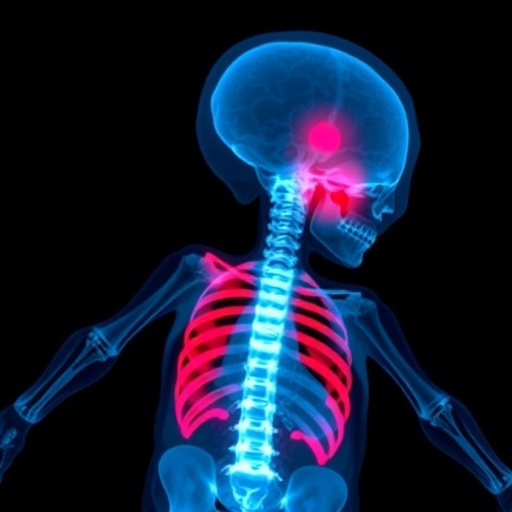Kidney cancer has long been recognized as a significant global health challenge, largely due to its morbidity and mortality burden, particularly in older adults. However, recent data from the Global Burden of Disease Study 2021 unveils a disturbing trend that has captured the attention of oncologists, epidemiologists, and public health experts: a rapidly increasing incidence of kidney cancer among young adults aged 20 to 39 years. This new insight underscores the urgency of re-evaluating our understanding of kidney cancer epidemiology and strategies for early detection, prevention, and treatment in younger populations.
The comprehensive study analyzed age-standardized rates of kidney cancer incidence, mortality, and disability-adjusted life years (DALYs) from 1990 through 2021, breaking down the data by sex, age group, and socio-demographic index (SDI). The findings reveal a significant upward trajectory in the incidence of kidney cancer among young adults, with an estimated annual percentage increase of 1.13%. This startling rise places this young cohort second only to the elderly population aged over 80 years in terms of rising incidence rates. Such a trend challenges preconceived notions that kidney cancer primarily affects older adults and highlights the shifting epidemiological landscape.
The mortality rate among young adults showed a more nuanced pattern. While the overall age-standardized mortality rate (ASMR) demonstrated a decline across the general population, the decrease was markedly slower in the 20-39 age group. In fact, male young adults exhibited a slight but statistically significant increase in mortality rates, contradicting the broader trend of improvement seen in other demographic groups. This persistence of mortality rates in youth despite medical advancements in kidney cancer treatment suggests potential gaps in early diagnosis, access to care, or aggressive disease phenotypes in this population.
Disability-adjusted life years, a measure that combines years lost due to premature death and years lived with disability, remained stable among young adults despite its general decline in the wider population. This static nature of DALYs in the younger cohort signals an ongoing public health problem where kidney cancer continues to exact a heavy toll on young adults’ health, quality of life, and economic productivity. It further emphasizes the need for targeted interventions tailored to the unique risk profile and health needs of this age group.
A particularly alarming trend evident in the data relates to the burden of kidney cancer attributable to high body mass index (BMI). Obesity, a modifiable risk factor, showed a consistent and significant increase in its contribution to DALYs among young adults, with an estimated annual rise of 1.28%. This finding intertwines with broader global challenges such as escalating obesity rates and sedentary lifestyles, underlining the complex interplay between metabolic health and cancer risk. Conversely, risk factors such as smoking showed a significant decline in their attributed burden, likely reflecting successful global tobacco control efforts.
Analysis of these epidemiological shifts across socio-economic strata reveals a complex mosaic. High socio-demographic index (SDI) countries have exhibited the most prominent declines in kidney cancer mortality and overall burden, arguably benefiting from advanced healthcare infrastructure, early detection programs, and improved treatment modalities. Nevertheless, these nations paradoxically maintain the highest baseline incidence rates, indicating persistent environmental, lifestyle, or genetic predispositions amid health gains.
Conversely, middle and low-middle SDI countries experienced worsening trends with increasing mortality and DALYs from kidney cancer. These regions often grapple with weaker healthcare systems, delayed diagnoses, limited access to cutting-edge treatments, and rising prevalence of obesity and other metabolic conditions. The differential patterns by SDI highlight stark inequities in kidney cancer outcomes that call for global solidarity in resource allocation, capacity-building, and preventive healthcare delivery.
Of particular concern is the future projection of kidney cancer burden to 2050, which forecasts a sustained and significant rise in young male adults worldwide. While overall population trends suggest a decline in incidence and mortality, this growing risk among young males portends new challenges for healthcare planning, emphasizing the necessity of gender-sensitive approaches in cancer control programs.
Scientists and public health practitioners must urgently deepen investigations into the biological mechanisms underlying kidney cancer in young adults. Potential genetic predispositions, environmental exposures such as trichloroethylene, and lifestyle factors, including diet and physical activity patterns, require closer scrutiny. Understanding these determinants could illuminate pathways for early screening protocols and preventive strategies that interrupt carcinogenesis at the earliest stages.
The study’s findings also underscore the critical importance of integrating kidney cancer awareness and risk factor modification into global health agendas. Obesity, as a major contributor, demands intensified public health campaigns promoting balanced nutrition, physical activity, and weight management, particularly targeting younger populations before cancer risk escalates.
Moreover, the gender disparity in rising kidney cancer burden, especially the male predominance in adverse trends, warrants tailored research and intervention frameworks. Biological differences, occupational exposures, and health-seeking behaviors all may contribute to sex-specific patterns and deserve dedicated attention in epidemiological surveillance and healthcare delivery.
Enhanced data collection efforts and investments in cancer registries, particularly in low and middle SDI countries, can improve the accuracy of kidney cancer burden assessment. This will enable more precise targeting of resources and evaluation of intervention impact at national and community levels.
Clinicians and healthcare providers must remain vigilant for kidney cancer symptoms and risk factors in younger patients, challenging the historical age bias in cancer screening and diagnosis. Early identification and timely treatment will be critical to improving survival rates and reducing long-term disability associated with kidney cancer in young adults.
Finally, this emerging kidney cancer challenge among young adults serves as a stark reminder that global cancer epidemiology is dynamic and multifaceted. It necessitates continual monitoring, adaptive public health strategies, and robust international collaboration to mitigate the profound human and economic costs of this disease.
In conclusion, the Global Burden of Disease Study 2021 has illuminated an urgent, previously underappreciated rise in kidney cancer among young adults, especially young males, across diverse socio-demographic landscapes. Addressing this trend demands a multi-pronged approach encompassing scientific research, public health initiatives, healthcare equity, and proactive policy efforts worldwide. Only through such comprehensive action can we hope to curtail the burgeoning kidney cancer burden and secure healthier futures for younger generations globally.
Subject of Research: The increasing global burden of kidney cancer, with a focus on epidemiology, risk factors, and trends among young adults aged 20-39 years across different socio-demographic contexts from 1990 to 2021.
Article Title: Rapidly increasing kidney cancer burden among young adults: insights from the 1990–2021 Global Burden of Disease Study
Article References:
Hu, M., Li, Z., Niu, Z. et al. Rapidly increasing kidney cancer burden among young adults: insights from the 1990–2021 Global Burden of Disease Study. BMC Cancer 25, 1748 (2025). https://doi.org/10.1186/s12885-025-15160-2
Image Credits: Scienmag.com
DOI: https://doi.org/10.1186/s12885-025-15160-2 (Published on 11 November 2025)
Tags: age-standardized cancer ratescancer mortality patterns in younger populationsearly detection and prevention strategiesglobal burden of disease study 2021kidney cancer epidemiologykidney cancer in young adultsmorbidity and mortality in kidney cancerpublic health implications of kidney cancerre-evaluating cancer treatment strategiesrising incidence of kidney cancersocio-demographic factors in cancer incidenceyoung adults cancer trends





